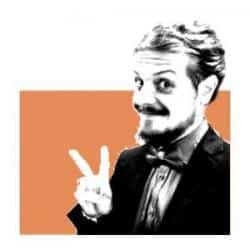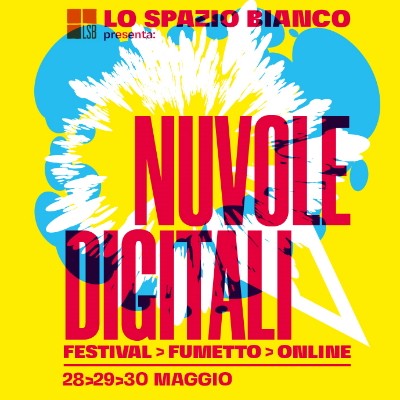Fantasies settings that takes with both hands from the West-African folklore, a sharp sense of irony which makes a foray into satire and a hyperdinamic style that merges african imaginary with US art (one for all, Mike Mignola): this is the receipt of success for Juni Ba, a young artist who is making his way into the US market as one of the freshest, more interesting authors of these days. After his first acclaimed graphic novel Djeliya (TKO Studios, for us True Believers one of the best comics of 2021) and a growing number of covers for Marvel and DC, beginning 2022 he made his Image Comics debut with the series Monkey Meat. We reached out to him to ask about his first steps, his works and inspirations.
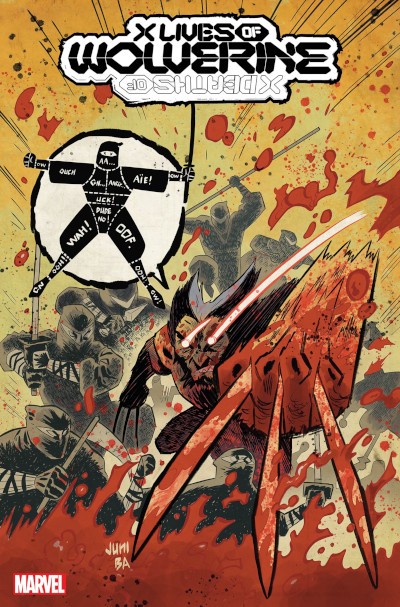 Hi Juni and welcome to Lo Spazio Bianco. First of all, I’d like you to introduce yourself to our audience: how did you decide to make comics and what was that comic that made you fall in love with this medium?
Hi Juni and welcome to Lo Spazio Bianco. First of all, I’d like you to introduce yourself to our audience: how did you decide to make comics and what was that comic that made you fall in love with this medium?
Hello! So I’m a cartoonist from Senegal, who grew up on a heavy diet of comics, manga and cartoons, and eventually decided that making comics was a viable career choice! I currently live in France and usually work with the likes of DC, Marvel, Image and IDW as a cover artist or a writer/illustrator. As for your second question, honestly it’s hard to say. I think the oldest comic I have is a copy of Spirou, a belgian icon and one of the most recognizable characters in Franco-Belgian comics. So I’d have to say that one!
What were your first steps in this world, both in your studies first and then in your working life?
So after 5 years of art school in France, I joined the efforts of the Panafrican collective Kugali who published some of my early stuff. I also worked in a video game company for a year, and published a local comic in France. Over time I started gathering attention on the internet and offers to draw covers and shorts started piling up!
What were the main influences on your style and your way of telling a story?
Aside from comics, I think movies and shows are a huge influence. Right now I can tell that a lot of what I’m making is influenced by things I grew up on. Cartoons, shows, films, books, even music. Monkey Meat, for example, is a book born of listening to Gorillaz a lot as a teen.
What are the tools you prefer in your work?
These days it’s all digital! Helps a lot with workflow, getting the work done fast and achieving a certain look that’s harder to produce on paper.
Are there any comics from your home country, Senegal, that you read as a child and had an impact on your art?
Sadly none. I didn’t have access to them. I heard of them but could never find any printed copy anywhere. If I’m not mistaken, the first comic magazine in Senegal (at least in my lifetime I think) was just made around two years ago.
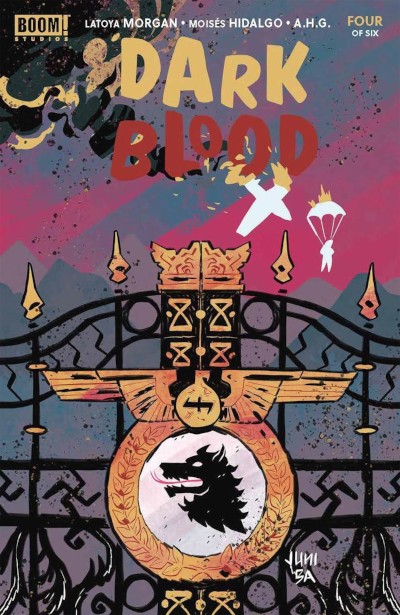 Surely your country and African culture have had a strong impact on your work, which always revolves around folklore but also current affairs of the African continent. So we have a mixture of past and present stories from: how did you come to create this well-balanced mix?
Surely your country and African culture have had a strong impact on your work, which always revolves around folklore but also current affairs of the African continent. So we have a mixture of past and present stories from: how did you come to create this well-balanced mix?
I think it’s the result of the media I grew up on. Shows on tv from America or Japan that used a lot of local or foreign folklore to create stories. I started looking at African lores and figured they’d be fun to use as inspiration with the characters, concepts and ideas that were part of every day local culture.
You have chosen to bet everything on this important and fascinating cultural baggage, which is quite rare if you look at the international mainstream comics market but above all in the US market. Were you aware of the risk? And what was the reasons that drove in telling these stories and focusing on these topics?
Honestly it’s amusing because I suspect people expect a response along the lines of “that was important for me as an african to show our culture to the world” etc..But the truth is I just thought it would be fun! Just for myself really. I didn’t need to prove anything. I just wanted to have fun and treat this as a personal challenge. It did become a point of pride as I started making it, because I understand the pressure, but I don’t treat the desire for representation as a driving force in my work. It did pose an issue as I tried to publish it in France. Most reactions were along the lines of “we don’t know how to sell this”. But it’s a symptom of a larger issue with the French market not wanting to go outside of their habits.
Irony plays a huge part in your stories: in Monkey Meat you are able to talk about human and environmental exploitation by creating an action-grotesque story at the same time; in Djeliya the hilarious village meeting is a summary of the political stalemate that paralyzes all decisions, in your country as anywhere else. When did you realized that irony could be a powerful weapon in your stories?
I just thought it was funny! If it makes me laugh, it goes in the story. There’s no deeper thought process going than trying to come up with situations that best represent the idea I want to convey, and it turns out that a lot of things in the real world are funny already. There’s an allegorical aspect to certain designs and archetypes too, that taps in something people understand on an intimate level, and I just take advantage of that.
 I would like to talk about Djeliya: how did you developed this story and how was your collaboration with TKO Studios?
I would like to talk about Djeliya: how did you developed this story and how was your collaboration with TKO Studios?
So Djeliya came about as I was trying to figure out what story could take place in the world and esthetic I was developing, based on West African influences. I really loved various aspects of a lot of stories, and just needed to organize them around a central theme. I found that theme when I found the icon of the Djeli. Everything is shaped around it. I shopped the book around France for two years, then decided to reach Americans and see if they’d be interested. TKO was the first choice, and they jumped on the deal right away! They were very professional, very effective, and gave me absolute freedom, which was amazing. I owe a lot to their editor Sebastian Girner.
In Djeliya there are three pivotal characters, namely Prince Mansour Keita, Djeliya Awa Kouyatè and Mbam the Holy Man. The three of them embody some archetypes not only of past African culture, but also of the present time. Could you tell us about them and their genesis?
They’re folk tale archetypes that find echo in the real world even now. Rulers, religious figures with influence and storytellers whose words can impact the world. That’s something present throughout time, so I thought it’d be interesting to make the story revolve around these three poles of social influence. Why does each of them want power? Who deserves it more? What would they do with it? These are interesting story questions with direct applicability to the world.
The Djeli Awa Kouyatè, the one who tells and advises the prince, has a fundamental role in the story, she gives the main title to your work. This choice sounds quite emblematic to me: can we consider this book also as a reflection on the power of narration and language?
I think so yes. The Djeli is the storyteller. I relate to that position the most, and I think it’s once I decided to make the book about that character that everything fell into place. It was very easy to find the throughline after that. Stories and how they’re used to manipulate the world is a theme I find very interesting.
 Apart from this thoughts, this work shows also the fun you had in creating powerful action scenes and playing with the Afrofuturist imagery. Are there any authors who have inspired this last aspect of your work? Not only writers, but also perhaps artists who are lesser known in Europe and the US.
Apart from this thoughts, this work shows also the fun you had in creating powerful action scenes and playing with the Afrofuturist imagery. Are there any authors who have inspired this last aspect of your work? Not only writers, but also perhaps artists who are lesser known in Europe and the US.
The funny thing is I didn’t know anything about that subgenre when I started. So I don’t actually consider my work afrofuturistic. Mostly because it’s not american, and because it’s not about the future. It’s a fantasy land that I designed based on seeing fantasy lands like those in Cartoon Network shows and comics and manga. So the influence of Afrofuturistic creators is close to none. I have to give a shout out to authors like Chimamanda Adichie or Amadou Hampathé Ba however, whose work is very influential in mine, but not necessarily where you’d expect.
Monkey Meat is a very particular series, created as a webcomic, then landed at Image Comics as an anthology. How was this idea of yours received and what is the leitmotif of this series?
Monkey Meat is a playground! I made it to have fun, make stories that just followed whichever themes, ideas and designs I felt like making. The setting is really more of an excuse. A place to showcase really anything I want to do. It was conceived back in high school and evolved consistently as I grew older and refined my skills. I took it to Image once I was confident enough that it was worth showing the world on a mainstream platform. I’m actually still not sure, but it’s done! But the general idea is that there’s this corporation that sells cans of monkey meat to everyone around the world. They operate from an island that they own and rule like their own little country.  It’s full of supernatural weirdness and monstrosities born of the company’s experiments that messed up the ecosystem. And it’s a hyper capitalist dystopia where anything can happen. The main character of the second issue is a boy who gets powers from a soda can and uses them to get revenge on criminals, while the hero of the third is a magician working as a delivery boy, who has to cross a bridge guarded by a troll, and that story is about trauma. Anything goes and that’s why it’s fun for me, and fun for those who read it.
It’s full of supernatural weirdness and monstrosities born of the company’s experiments that messed up the ecosystem. And it’s a hyper capitalist dystopia where anything can happen. The main character of the second issue is a boy who gets powers from a soda can and uses them to get revenge on criminals, while the hero of the third is a magician working as a delivery boy, who has to cross a bridge guarded by a troll, and that story is about trauma. Anything goes and that’s why it’s fun for me, and fun for those who read it.
And the reception has been great! People are excited, platforms say it’s one of the best comics of the year already. I’m flattered! Especially considering this is just a fun thing I made because someone decided to let me do it.
For now, the miniseries will be composed of 5 issues: do you already foresee a sequel, or maybe a larger story set in the same universe?
Oh it’s a concept that can go forever if I want it to. As long as there’s stories I feel like putting in there, I will. I just hope Image lets me do that.
Thanks a lot Juni for being with us!
Interview realized via e-mail in February 2022
Juni Ba
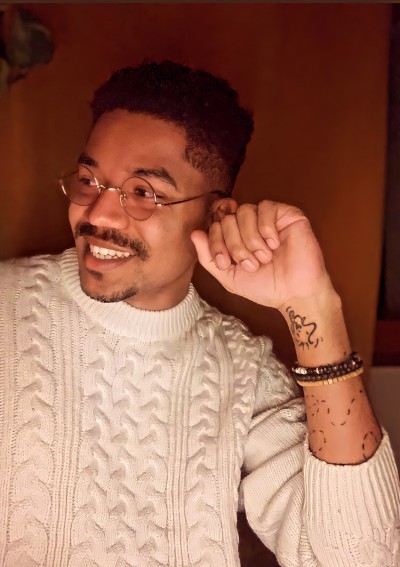
Born in 1992 in Senegal, Juni Ba is a cartoonist, author of Djeliya with TKO Presents and Monkey Meat with Image comics, as well as illustrator and writer for various publishers like DC, Marvel, IDW and more. He’s 80% orange juice, which fuels his art.
Check out his art on ArtStation, Instagram e Twitter.




